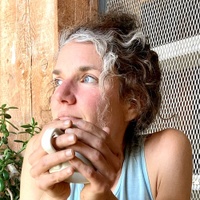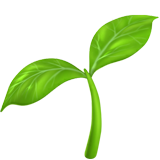On knowing what you have to do
Prelude
Zak Prekop (b. 1979, Chicago) is a Hudson Valley-based painter known for his intricate, nonrepresentational works. For more than two decades, he has explored painting’s ability to compress time by developing compositional strategies that balance spontaneity with meticulous mark-making. His works collapse multiple interpretations—such as the impulsive, expressive nature of action painting and the precise, optical effects of hard edge geometric compositions—creating an awareness of time as viewers decipher the artist’s actions. Prekop’s solo exhibitions include the Aldrich Contemporary Art Museum, Ridgefield, CT; Maxwell Graham Gallery, New York, NY; Galería Marta Cervera, Madrid, Spain; Shane Campbell Gallery, Chicago, IL; and Hagiwara Projects, Tokyo, Japan. His work is held in collections at the Walker Art Center, the Columbus Museum of Art, the Museum of Modern Art and the Carnegie Museum of Art.
Conversation
On knowing what you have to do
Painter Zak Prekop discusses being part of an artistic family, time as a collaborative component of his practice, and not ever feeling stuck.
As told to Ty Maxwell, 2042 words.
Tags: Painting, Art, Focus, Process, Family, Creative anxiety.
You and your wife are both painters. What’s it like to share your space?
It’s great! I’m really used to it, and the convenience of having it right here [by our house] is ideal. We are in each other’s studios and looking at stuff pretty often. It’s great to not be totally alone, but it’s not an intrusion or anything. We sort of give each other suggestions and then may or may not take those suggestions. [laughs] On both sides.
Seeing Durations, your exhibition at the Aldrich Contemporary Art Museum, and reading about the intention behind the series, I understand these paintings as an invitation to the viewer to think about the process. I’m curious about more invisible aspects of the process. What is not obvious but still essential?
I’m pretty bound to the paintings, as far as how they come together. There’s no references outside of them, or even research projects. It’s really me with the object. I mean, I’m listening to music constantly and thinking about music and the structure of the painting together, so that’s definitely a huge source of inspiration. I do make some music in [my studio], in moments where I just need a break. I sent off the show and then the first thing I did in here was start messing around with music again, but it’s very much an “on the side” kind of thing.
Do you perform?
I played with a band called Hurray when I lived in the city, up until 2017—I was gone for a couple of years to Chicago, too—but when I was in Brooklyn, I did some music and collaborative art with these guys. So we made some records and we did some performances, especially gallery events and things like that. But it was totally made-up noise that could succeed or fail… It was mostly terrible, and then [we would] have these great moments that made it worth it.
Totally. That’s the exploratory thing.
But we didn’t want to inflict that on the public too regularly.

the studio
I’m curious about your general routine. I think process and routine can be overlapping terms. What can you tell me about your day-to-day?
It’s changed a lot since having a kid. I used to be maniacally working in the studio as much as possible, especially as a show’s coming up—but even without that, I’m just happy and comfortable working because I know what I’m supposed to be doing. I have a way of working, and it really focuses me. When I’m not working, I’m a little bit like, “What am I doing?” And because my paintings are labor-intensive, I have to put in a lot of time to get them where I want them to be. So I’m coming out early in the morning and staying out late, if I have to. If I start getting tired and slow down, I can take a nap on the couch or get distracted looking up information about music. I don’t do Instagram or anything like that, but I’m constantly looking at Discogs.
[My wife] Heather and I, we trade off. If she’s working on a show, I have a little more responsibility for taking care of [our child] Arthur. And vice-versa; we trade off who gets the most studio time. Currently, because I’m done with my show, she’s working on her show… And it’s August, so [Arthur] is not even in school or daycare, so I’m taking him swimming and stuff like that. It’s probably good to be forced to not just be working in my studio like a psycho all the time.

works in progress
Do you spend a lot of time thinking about your paintings when you’re away from them?
Starting the paintings, I don’t have a lot of ideas… In the beginning, it’s really just my sense of composition, and moving the paint around with palette knives. As it gets closer to the end, I usually shift what I thought the painting was going to be; if I had a vision for it, it usually goes in another direction in order to get resolved. Especially if I’m stuck or something, I will be thinking a lot about how to handle a painting. But it’s mostly that I have to be looking at it. They’re not in my head all that much.
What is it like to come from a family of artists?
I grew up with a lot of art around me. It was kind of a given; I just thought of that as something that everybody does. I never sat down and thought, “What do I need to say as an artist?” or “What do I want to do?” I always thought of it as something I do with my time, just part of life in a really ingrained way. I think that’s partly from coming from that background. And there’s an audience, I guess, built into my family. It’s not that I show them everything I do, but I think somewhere in my mind they’re looming. They’re always there in my taste and judgment. I’ve had friends that made the move to art more on their own, and I always thought there was something great about that, too… They were like, “Oh, that’s so cool you had artist parents.” And it is, and I appreciate it. But on the other [hand], there’s something about needing to do it so bad that you find your own way to do it.

works in progress
Having people in your life who normalize being an artist can take away a lot of insecurity or anxiety. The act of art-making can be more about a pure pleasure, or even just neutral. Neutral sounds nice compared to anxiety-ridden.
Yeah, I think I have that, especially because I work all the time. I gradually developed this way of working, so it’s not like I have to decide often, “What am I going to do?” [There is] always something I can do in the studio. I’m never really stuck. I maybe have some anxiety in bed at night or something. I’m like, “What am I doing? What’s the reason to make these paintings?” But not really in [the studio].
How would you give somebody advice about how to get to that state?
I think there’s a little bit of denial involved, for me. I don’t have a real sound defense of my work, morally. You have to just work. Just start, and not act on your insecurities. It’s impossible to not worry about what you’re doing, or to not wonder if it’s worthwhile, but I think you have to do it anyway. [You can be] inspired by those questions, but I think they can be in the background. I don’t mean to sound nihilistic about it, like it doesn’t matter what you think about it. But I think that you can be inspired by your concerns about what you’re doing in a slower way. I think your work can change over time without having to sit down and say, “What’s going wrong here? What do I have to do?” I think it could be a slower process than that. And in the meantime, you can keep going and discover things through working.

coin situation 2
Do you find that working constantly slows down those thoughts?
Yeah. And it might be partly that the way I’m working is in itself really slow, so it takes a long time. The moments of judgment within the work are stretched out. One reason I like working with transparency in the paintings is, even if I did something for a week that didn’t turn out like I hoped it would, I want that time to still be there. I’m a little bit stingy about it; I don’t want to have wasted time, in a way. Because it takes so long to do everything I do, I hate just erasing something. I’d rather find a way to make what I did work by changing it or adding something new, rather than stepping backwards and saying, “I’ve got to start over again.” I try to get them to be either working well in a clear way, or to be interesting to me and to lead to something else later.

coin situation 1
I’m struck by the way you talk about time as a component of your practice. It sounds collaborative, like you’ve made friends with the fact that things take a long time. You’re not saying it pejoratively.
Well, that’s funny, because sometimes I’m like, “This is ruining my life.” [laughs] “This is really making me work. I’m neglecting my friends and family and my time to read a book.” It does take a toll. I’m not saying that that’s not an aspect of it, but it’s a little bit this suspension of disbelief. In the end, I’m like, “Well, this is what I have to do. I’ve found myself in this place. I’ve got myself here through my paintings.” I feel like I live in this space, making these paintings that take a long time, and I get worried about it—like, am I wasting time? But I, in the end, go back to it and commit to it, and then figure that maybe, gradually, I’ll end up somewhere else, but for now, this is what I have to do.
At the same time, I think a person’s experience with the paintings has a lot of questions about time in it—how this thing happened. Not so much labor, but just the order of things, or the speed of the marks. It’s such a component of seeing the paintings that I think my time making them is related to that.
I listen to a lot of music that’s very grand in scale. Like Éliane Radigue, or Morton Feldman, especially his really long, later works from the ’80s—these five-hour compositions. I love that music and I love thinking that I have something to do with that.

coin situation 3
You were saying before that you worry you’re not making time to read a book, but you’re making time to listen to a five-hour Morton Feldman composition!
[laughs] I could be listening to audiobooks or something, but [painting] is definitely a great way to listen to music.
I once heard or read an interview with a composer where he was describing Steve Reich’s Music for 18 Musicians as fast music inside of slow music, or slow music inside of fast music. And I feel like there’s some of that in your paintings: the slow marks and fast marks; the things that take a long time, but are overlaid with things that were fast gestures and little events in and of themselves.
The Aldrich show has much bigger paintings, and I particularly like that with the large-scale paintings—that they have all this space to stretch out, but the fidelity of the mark is still similar to the small ones. I have this width of line that I can handle, and the paint always goes up to these fine lines. So up close, they’re similar, but there’s just more room to have a difference between an up-close and far-away experience.
And more room to have big shapes mixing in with small shapes or small marks.
And they contain the smaller things. In the way I work, a large sweep will pass through the painting; smaller shapes move into that and are interrupted by it. The forms make windows into other spaces, and I think music can work that way too.
Zak Prekop recommends five albums:
- Name
- Zak Prekop
- Vocation
- painter
Some Things
Pagination



